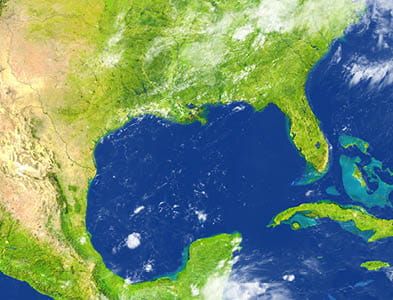Biden Announces Pause on Pending Approvals of LNG Exports Analysis and Potential Impacts
Biden Announces Pause on Pending Approvals of LNG Exports Analysis and Potential Impacts
On January 26, 2024, the Biden-Harris Administration announced a temporary pause on pending decisions on exports of liquefied natural gas (LNG) to non-free-trade-agreement countries until the Department of Energy can update the underlying analyses for authorizations.1
As shown in the chart below, following a period of peak importing of LNG in 2007, in 2015 U.S. companies began expanding the required infrastructure base required to support much higher exports of this valuable commodity.
U.S. LNG imports and exports, 1985 - 2022, billion cubic feet2
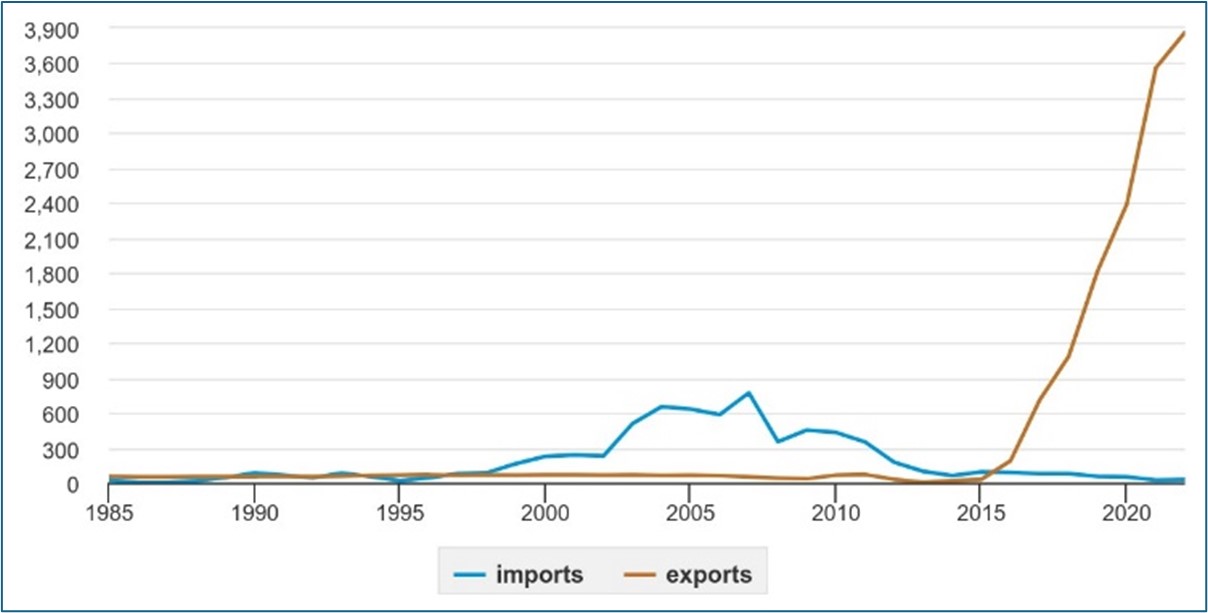
LNG is made by cooling natural gas to a temperature of around -260°F (-162°C), which changes it from a gas to a liquid. Where natural gas pipelines are not feasible or do not exist, liquefying natural gas is a way to move natural gas from producing regions to markets.3
According to the U.S. Energy Information Administration, in the first half of 2023, the U.S. was the largest exporter of LNG, followed by Australia and Qatar. Other key exporting countries included:
- Russia
- Malaysia
- Nigeria
- Algeria
- Indonesia
- Oman
Global LNG exports by exporting country (Jan 2018 - Jun 2023), billion cubic feet per day4
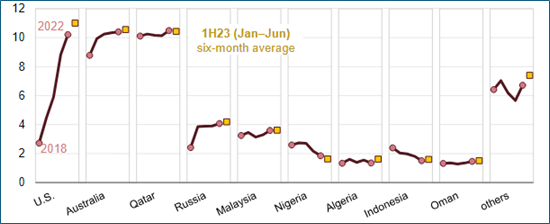
Global LNG import capacity additions by select countries (2023 - 2024), billion cubic feet per day5
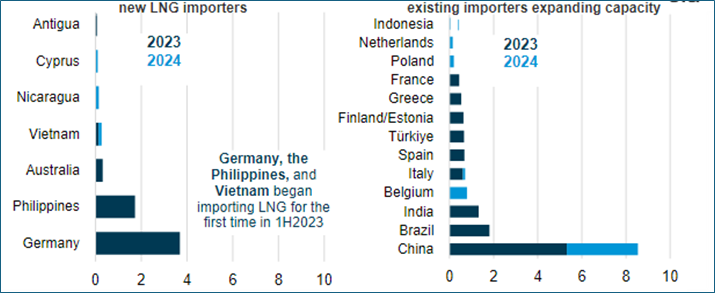
As shown above, China is the largest importer of LNG, followed by Germany, Brazil, the Philippines, and India.
Biden’s decision to pause new approvals of LNG exports in January 2024 has several potential impacts:
- Environmental Impacts: The decision is seen as a win for climate advocates. Environmentalists hailed Biden's decision, saying LNG exports not only pollute communities and add to the climate crisis but also raise energy prices for U.S. families and businesses. Abigail Dillen, president of the environmental group Earthjustice, called on the Biden administration to follow through on its commitments to climate action and environmental justice “and stop dangerous fossil fuel infrastructure” such as LNG terminals.6 However, countries dependent on LNG imports, like China and India, may elect to build additional coal generation to offset a reduction in response, causing a net increase in global carbon emissions.
- Economic Impacts: The pause will cause an expected reduction in the global supply of LNG, potentially causing prices to increase. Also, curtailing future U.S. LNG exports will create a greater opportunity for Russia and other countries to increase their LNG exports.
- Impact on Proposed Projects: The decision will not affect current export projects or those currently under construction. However, proposed projects waiting for permits will now be indefinitely halted. Seven LNG terminals are currently operating in the U.S., mostly in Louisiana and Texas, with up to five more expected to come online in the next few years. Biden’s action would not affect those projects but could delay a dozen or more LNG projects that are pending or in various stages of planning.7
- Political Impact: Republican views: The American Petroleum Institute, the largest lobbying group for the oil and gas industry, called Biden’s action “a win for Russia and a loss for American allies, U.S. jobs and global climate progress.” Mike Sommers, API’s president and CEO, said no review is needed to “understand the clear benefits of U.S. LNG (exports) for stabilizing global energy markets, supporting thousands of American jobs and reducing emissions around the world by transitioning countries toward cleaner fuels” and away from coal.
Democratic views: Environmentalists hailed Biden’s decision, saying LNG exports not only pollute communities and add to the climate crisis but also raise energy prices for U.S. families and businesses. Most such facilities are located in the South in communities of color and low-income areas “that are already overburdened by fossil fuel pollution and are on the frontlines of climate change,” Dillen said.8
The actual implications of the pause in LNG development will depend heavily on how long the pause remains in effect, the results of the 2024 election, and whether the next administration puts tighter restrictions on oil and gas activity or removes this and other impediments to oil and gas production and export capabilities.
WTI Strip Prices Increase
Spot prices and futures prices for the West Texas Intermediate (WTI) contract increased by approximately $4.00 per barrel in the near term and increased approximately $1.00 over the longer term.
WTI Strip Prices - One Month Change
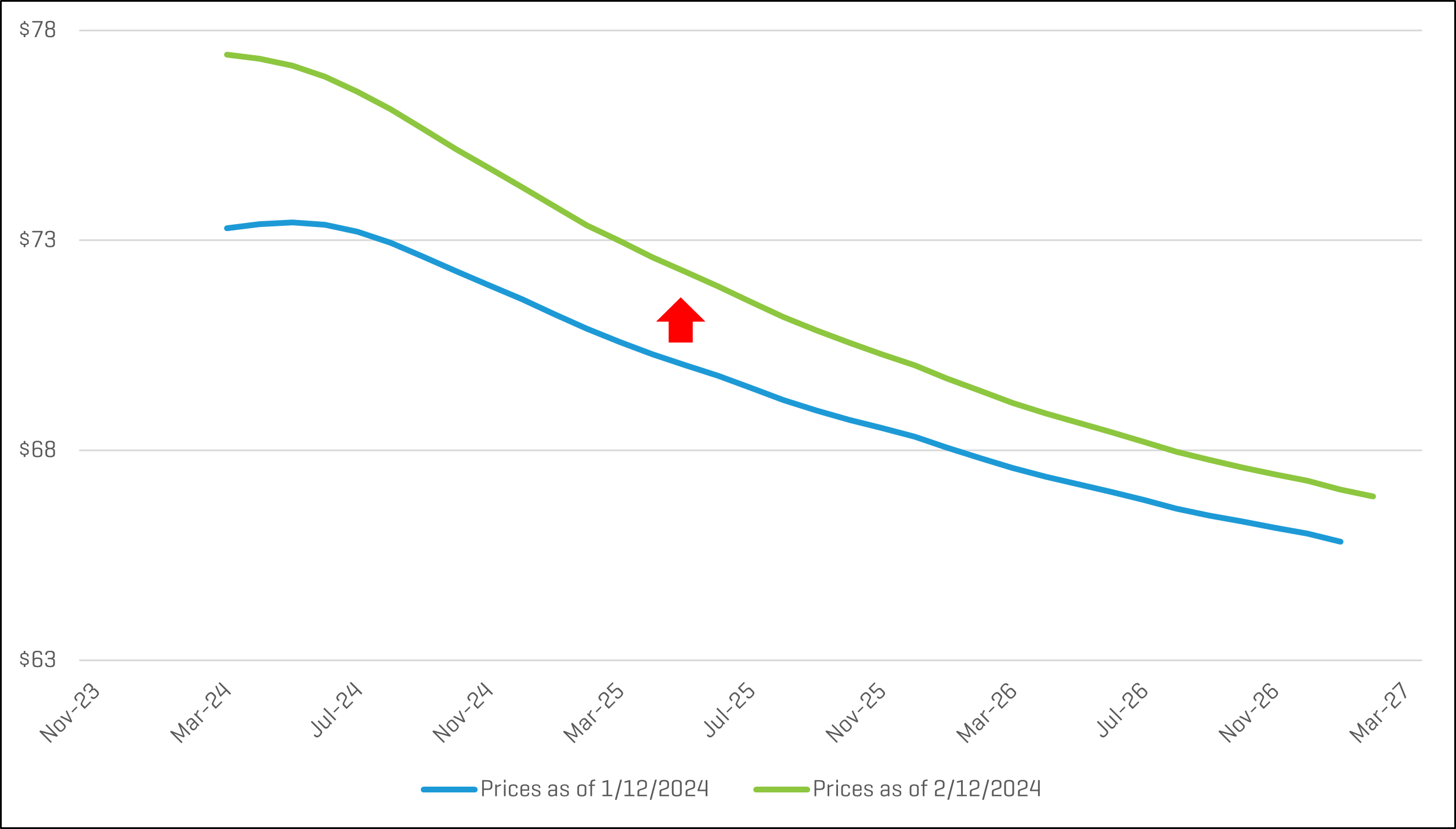
As shown, the oil price curve remains in a state of “backwardation,” reflecting the market’s expectation of lower future spot prices.
Oil Price Outlook
The price distribution below shows the crude oil spot price on February 13, 2024, as well as the predicted crude oil prices based on options and futures markets. Light blue lines are within one standard deviation (σ) of the mean, and dark blue lines are within two standard deviations.
WTI Crude Oil $/BBL
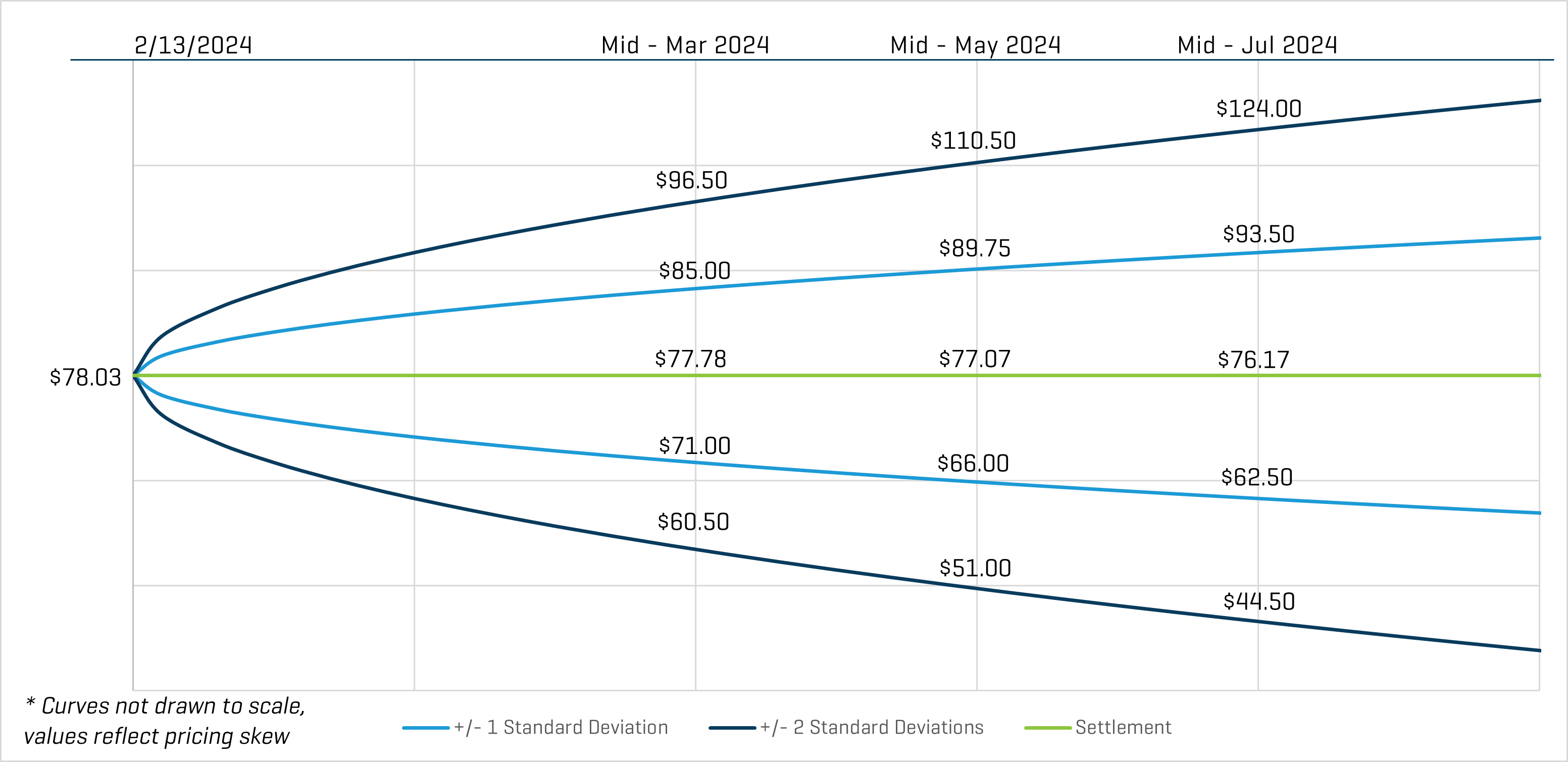
Based on these current prices, the markets indicate there is a 68% chance oil prices will range from $66.00 and $89.75 per barrel in mid-May 2024. Likewise, there is roughly a 95% chance that prices will be between $51.00 and $110.50. By mid-July 2024, the one-standard deviation (1σ) price range is $62.50 to $93.50 per barrel, and the two-standard deviation (2σ) range is $44.50 to $124.00 per barrel.
Key Takeaways
Remember that option prices and models reflect expected probabilities, not certain outcomes, but that does not make them any less useful. Through the early half of 2023, crude oil spot prices primarily fluctuated within the range of $70 to $80 per barrel. Thereafter, from August 2023 through October 2023, we observed spot prices primarily above that range. During that time, we observed an increase in futures price volatilities. As spot prices have settled back down to the $70 to $80 per barrel range, futures price volatilities have begun to decrease, as evidenced by the futures price ranges observed. For mid-July 2024 pricing as of February 13, 2024, the 1σ range had a spread of $31.00 per barrel, and the 2σ range has a spread of $79.50 per barrel. For comparison, in 2022 we observed 1σ and 2σ price ranges in excess of $65.00 and $150.00, respectively.
- "FACT SHEET: Biden-Harris Administration Announces Temporary Pause on Pending Approvals of Liquefied Natural Gas Exports," The White House, January 26, 2024.
- "Natural gas explained: Liquefied natural gas," U.S. Energy Information Administration.
- Ibid.
- "The United States exported more LNG than any other country in the first half of 2023," Victoria Zaretskaya, U.S. Energy Information Administration, September 12, 2023.
- "Three more countries began importing liquefied natural gas this year, and more will follow," Jordan Young, Victoria Zaretskaya, U.S. Energy Information Administration, August 30, 2023.
- "Liquefied Natural Gas: What to know about LNG and Biden's decision to delay gas export proposals," Matthew Daly, The Associated Press, January 26, 2024.
- Ibid.
- Ibid.




